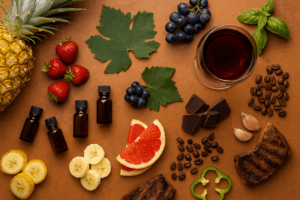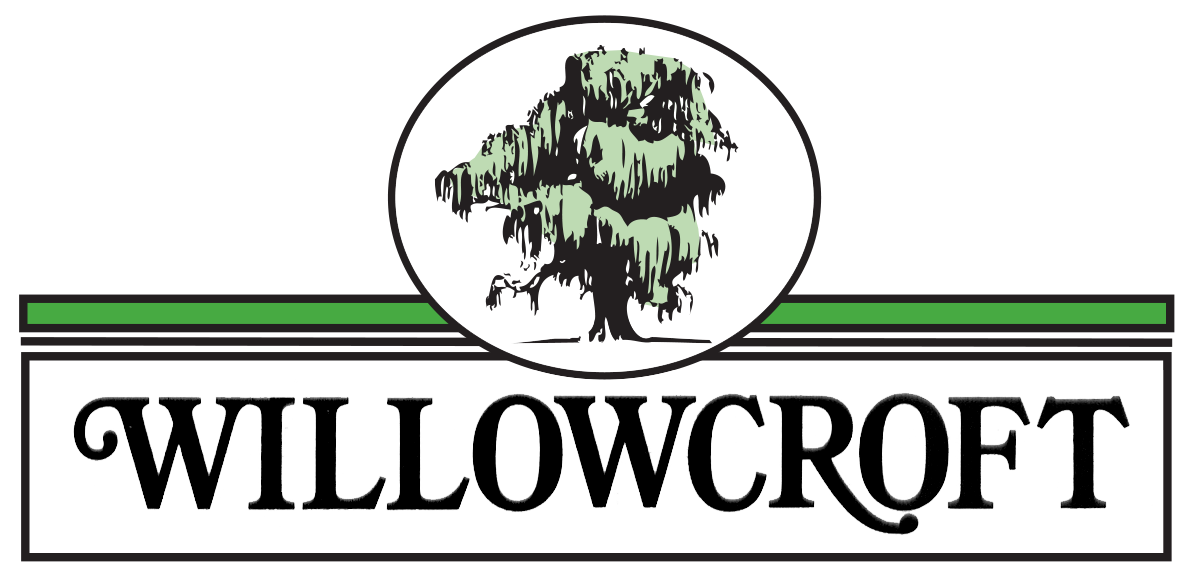
A Beginner’s Guide to Aroma Chemistry
Have you ever wondered why a freshly poured glass of wine fills the room with scent before you even take a sip? That’s thanks to volatile compounds—tiny molecules that easily turn into vapor and carry aroma through the air. These are the invisible storytellers of every wine, from crisp whites to bold reds.
A volatile compound is an organic chemical that evaporates easily at room temperature. When these molecules rise from your glass, they travel through the air and reach your nose, triggering your sense of smell. The combination of these molecules—and how your brain interprets them—is what creates a wine’s unique bouquet.
In wine (and food), these compounds come from many places: the grapes themselves, fermentation by yeast, and even aging in oak. Three of the most important families of volatile compounds are esters, thiols, and pyrazines—each one shaping how a wine smells and tastes.
Esters: Fruity and Sweet Aromas
If you’ve ever smelled apple, pear, or pineapple in a glass of wine, you’re smelling esters. They are some of the most delightful and recognizable aroma compounds, responsible for much of the fruitiness we love in young wines.
How they form: Esters are created when alcohols react with acids—something that naturally happens during fermentation as yeast works its magic. Winemakers can influence ester formation through temperature, yeast selection, and fermentation speed.
Aroma examples:
-
Isoamyl acetate → Banana
-
Ethyl butyrate → Pineapple
-
Ethyl hexanoate → Apple or pear
-
Ethyl methylbutyrate → Strawberry
As wines age, esters can fade or transform, which is why young, aromatic wines like Albariño or Traminette often burst with fruit right after bottling.
Thiols: Pungent and Tropical Aromas
Thiols are sulfur-containing compounds famous for their tropical punch. They can deliver beautiful notes of grapefruit, guava, or passion fruit—but in excess or under certain conditions, they can also turn unpleasant. Humans are incredibly sensitive to thiols, detecting them even at trace levels.
How they form: Thiols can exist in two states—bound (non-aromatic) and free (aromatic). During fermentation, yeast enzymes can “unlock” bound thiols, releasing their signature scents into the wine.
Aroma examples:
-
3MH (3-mercaptohexanol) → Grapefruit and guava
-
3MHA (3-mercaptohexyl acetate) → Passion fruit
-
4MMP (4-mercapto-4-methylpentan-2-one) → Boxwood or flinty notes
-
Unfavorable thiols → Rotten cabbage or sewage
Thiols are often linked to wines like Sauvignon Blanc, where winemaking techniques are carefully tuned to highlight their bright, tropical qualities.
Pyrazines: Earthy and Roasted Aromas
Pyrazines tell a different story—one of earth, herbs, and toast. These nitrogen-containing compounds contribute depth and complexity to many wines, particularly certain reds and cool-climate varietals.
How they form: Pyrazines can occur naturally in grapes or develop through reactions like the Maillard reaction—the same browning process that gives roasted coffee and toasted bread their aroma. In some cases, fermentation can also generate them.
Aroma examples:
-
Methoxypyrazines → Green, herbal, or earthy notes (found in Cabernet Franc and Sauvignon grapes)
-
Alkylpyrazines → Roasted coffee and nuts
-
Dimethylpyrazines → Chocolate and cooked meats
At Willowcroft, we often find a gentle touch of pyrazine character in our Cabernet Franc, balanced by ripe fruit and spice for a layered, elegant profile.
The Art Behind the Science
Each volatile compound tells part of a wine’s story. Together, they create the sensory experience that makes every sip unique. Understanding esters, thiols, and pyrazines gives wine lovers a deeper appreciation for what’s happening inside—and above—the glass.
Next time you swirl your wine, take a slow sniff before tasting. Those rising aromas aren’t just pleasant—they’re chemistry in motion.
